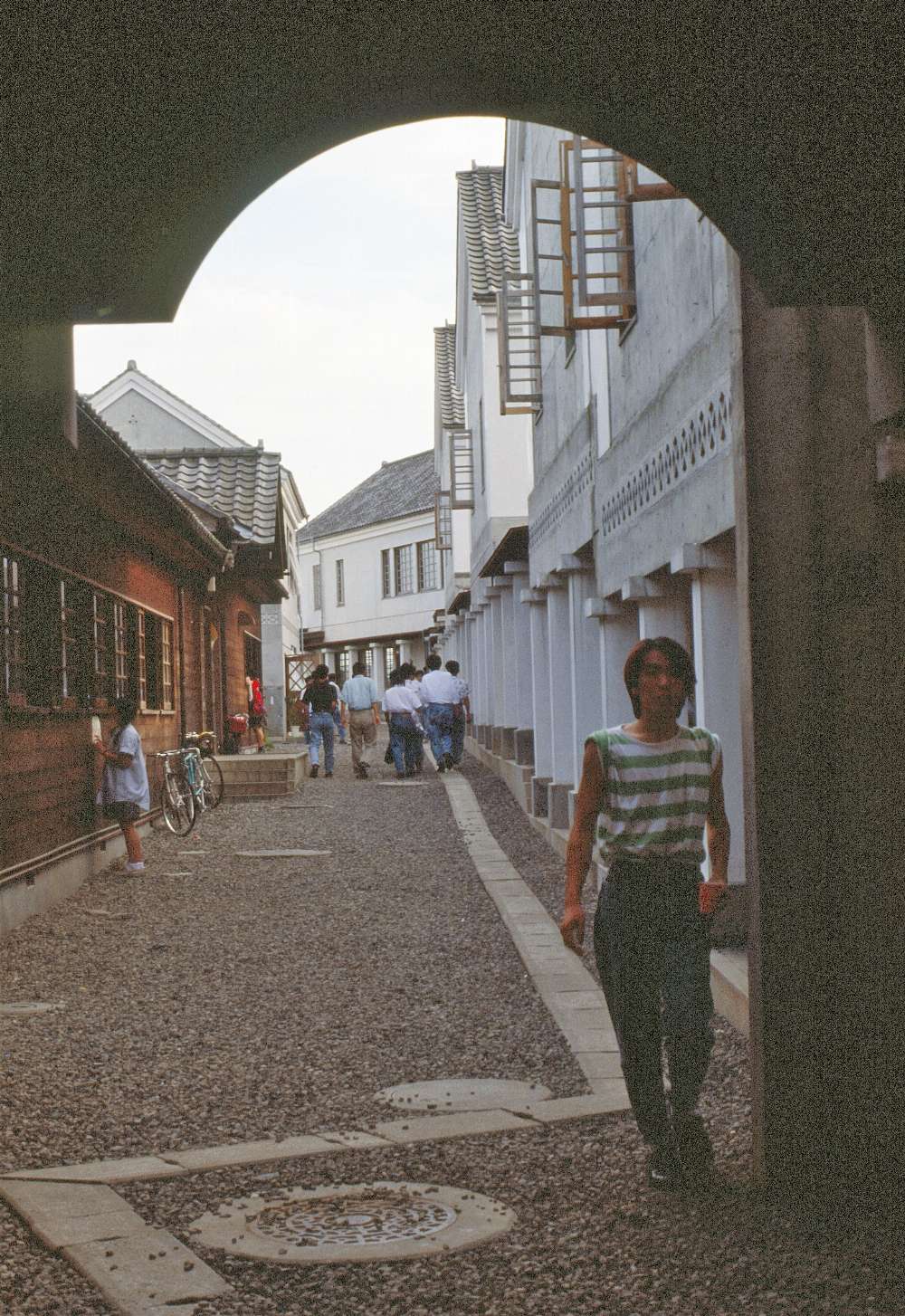
Eishin Campus – High School: Campus Pedestrian Streets Network
1986 to 1989The Eishin Campus pedestrian network includes a main square connected to the homebase wide street, narrow streets, arcaded alleys, paths and courtyards, fences, gates and terraces. It starts with a small square in front of the small gate, continues with the entrance street stretched up to the main gate, which leads into the main square. The main square, facing the lake, leads into the homebase street, which is the heart of the High School.
The main homebase street is formed by the individual homeroom buildings. It is a wide, lively, sunny street, which creates a forum where the students can come together outdoors, as a larger group, and where lively activity can unfold.
Gates were designed to invite the visitor to continue along the paths and streets of the site, as well as to create an act of entrance and passage.
Contents
-
The Campus of Eishin - High SchooI: The pedestrian network of the campus and the main square - Photographs of project model
01/01/1982
The main square in the modeling stage, when it started to be envisioned and take shape; buildings are still quite rough.
-
The Campus of Eishin - High SchooI: The pedestrian network of the campus and the main square - Photograph of project model
01/01/1983
Portion of the Homebase street in a carboard model at 1:100 scale, focusing on the Homeroom buildings .
-
The Campus of Eishin - High SchooI: The pedestrian network of the campus and the main square - Photograph of project model
01/03/1984
The main square buildings in rather detailed large scale models, testing volumes, proportions, details, in parallel with the preparation of drawings.
SEE ALL Photographs
References
-
The Unfolding of Public Space and Gardens as Positive Space
Outdoor space is positive when it is shaped just as a room is shaped. It has a contained character, it is bounded by walls, fences, natural vegetation, enclosure of some kind. It looks into other positive spaces, some larger, some ...
-
Geometry and Fifteen Fundamental Properties
Christopher Alexander recognized the importance of the geometry of centers and for years he was looking for the common structural features among buildings, paintings, streets, carpets, doors, windows, etc. which have "life" and "wholeness". He identified fifteen structural features which ...
-
Design and Construction is one Integrated Making Process
The design process of a project and its construction process are united into one continuous and intertwined making process, unfolding in a step-by-step sequence. Design ends together with the completion of the construction process. "Making" is a conception of the ...
SEE ALL Scientific Research
-
The Nature of Order - An Essay on the Art of Building and the Nature of the Universe.
Book Two - The Process of Creating Life
2002
“The Process of Creating Life”, the second volume of “The Nature of Order” series presents a dynamic theory of living structure. It begins with an analysis of transformations, which occur in nature, and the distinction between structure-preserving transformations, responsible for ...
-
The Nature of Order - An Essay on the Art of Building and the Nature of the Universe.
Book Three - A Vision of a Living World
2005
“A Vision of a Living World”, the third volume of “The Nature of Order” series, presents, for the first time, a full spectrum of Alexander’s and CES built and unbuilt works. The book describes hundreds of buildings, plans, neighborhoods, drawings, ...
-
The Battle for the Life and Beauty of the Earth - A Struggle between Two World-Systems
2012
The ninth and last volume of “The Center for Environmental Structure Series” on architecture published by Oxford University Press is the “The Battle for the Life and Beauty of the Earth – A Struggle between Two World-Systems”. The book puts ...
-
盆進学園東野高等学校 / Eishin Gakuen - Higashino High School Iruma City
01/06/1985
-
磁進・東野高校にみるアレグザンダーの実験 - 日本の現実とのズレ大きく, 、直営方式の難しさ露呈 / Alexander's Experiment in Higashino High School - Large Deviation from the Reality of Japan Revealing the Difficulty of the Directly Management Method
20/05/1985
-
建築のプロセス ハンスヨアヒム. ナイス / Architecture Process of Eishin Campus
01/06/1985
SEE ALL Articles




 Go Back
Go Back